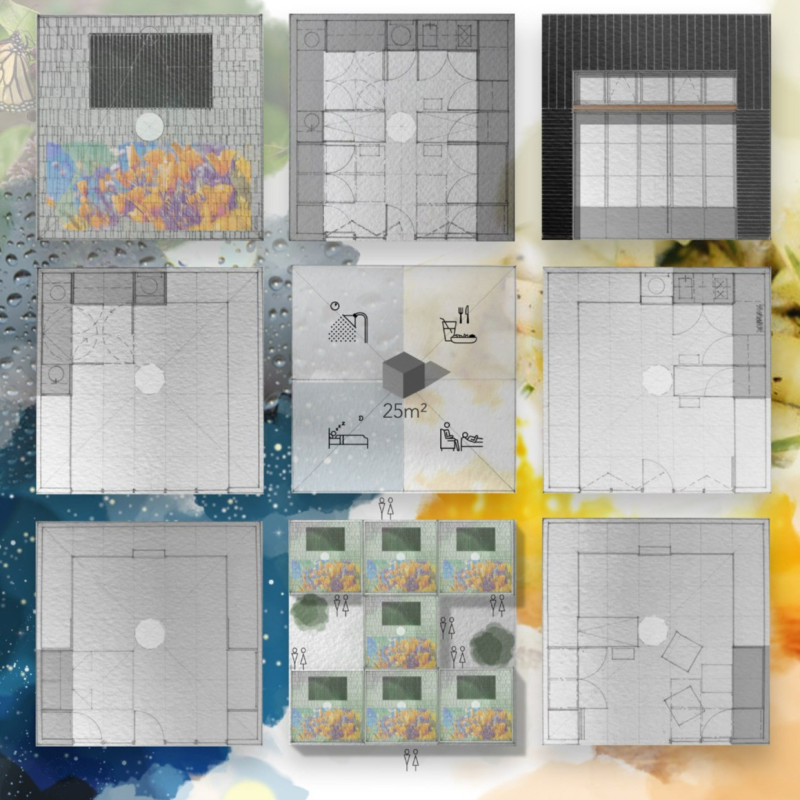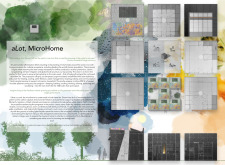5 key facts about this project
The microhome focuses on sustainable living through an innovative design. It is situated within a context of global afforestation efforts, addressing ecological concerns while providing a practical space for its users. The design embodies the concept of the poche, which promotes interaction between the home and its occupants. It aims to heighten ecological awareness and improve daily living experiences.
Architecture Concept
This home is designed as an off-grid dwelling that incorporates energy-efficient solutions. The use of sun-tempered design and high-quality insulation ensures optimal temperature regulation. Solar hydronic heating and cooling systems significantly reduce energy costs and environmental impact. The layout is well-thought-out, providing comfort and maximizing space for a two-person household.
Materials
Renewable wood forms the core of the structure, offering both durability and a natural aesthetic. A green roof enhances the building's ecological profile, promoting biodiversity and assisting with rainwater filtration. The contrast between the black charred wood exterior and the lighter interior finish creates a warm, inviting atmosphere. These material choices reflect a commitment to sustainability while maintaining visual appeal.
Spatial Configuration
Inside, the microhome spans 900 square feet, divided into modular areas. This organization allows different activities—sleeping, bathing, cooking, and relaxing—to take place within the same footprint. The open space of 1440 cubic feet provides flexibility, accommodating various functions as needed. Natural light plays a crucial role in the design, entering through a central pinhole skylight to create a bright and airy feel.
Transitional Elements
A folding glass façade encourages a connection between the indoors and outdoors. This feature allows fresh air and sunlight to enter the living space, marking the passage of the day. Such elements help residents engage with their surroundings, fostering a relationship with nature that enhances everyday life. The overall design promotes a lifestyle focused on sustainability while ensuring a comfortable and adaptable living environment.



















































